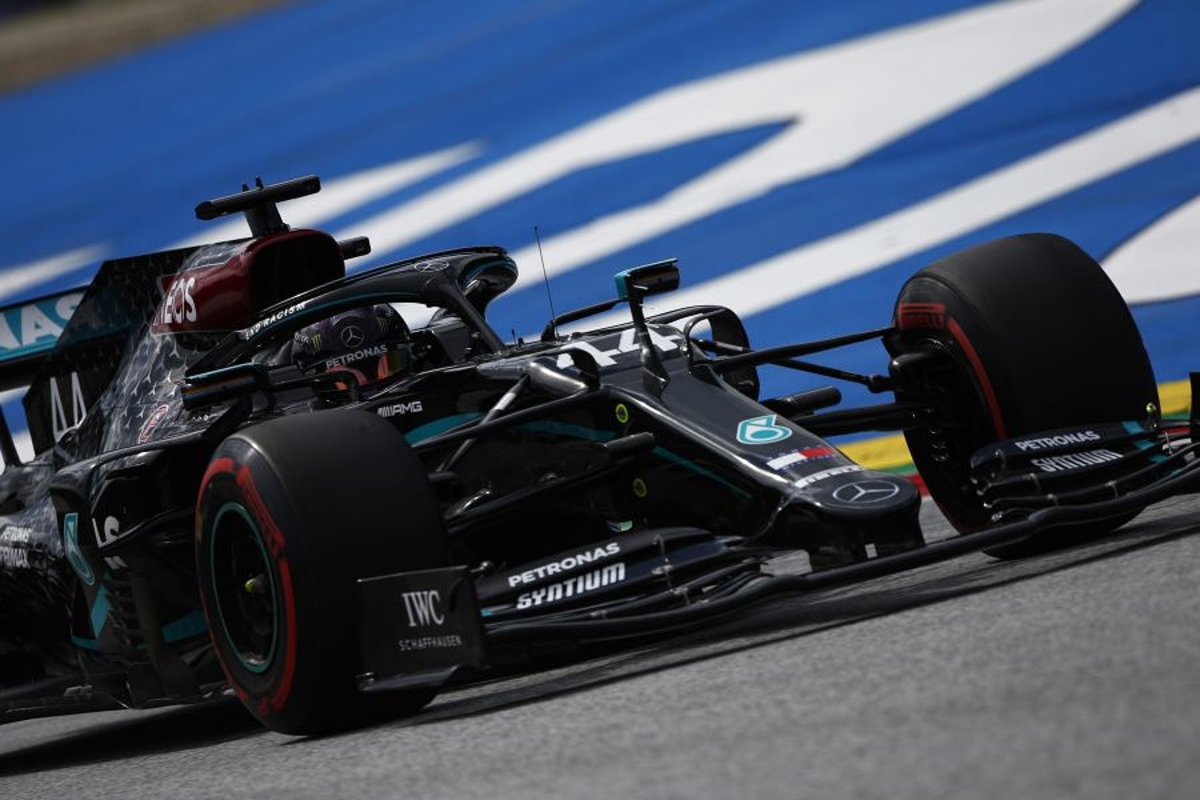Red Bull's protest against Formula 1 rival Mercedes' DAS system has been rejected and declared "not founded" by the Austrian Grand Prix stewards.
Red Bull had protested the device after the second practice session at the Red Bull Ring, with boss Christian Horner determined to seek clarity on its legality.
But following a lengthy hearing by the four-man stewards' panel, including Vitantonio Liuzzi, they have determined that "the DAS system is not part of the suspension, nor can it be considered to illegitimately adjust the suspension".
It added that "the stewards consider DAS to be a legitimate part of the steering system and hence to satisfy the relevant regulations regarding suspension or aerodynamic influence.
"In the opinion of the stewards, the DAS system is physically and functionally a part of the steering system. As such, it benefits of the implicit exceptions to certain suspension regulations applicable to steering".
The protest had related to articles 3.8 and 10.2.3 of the FIA's technical regulations.
Article 3.8 refers to aerodynamic influence, and that 'any specific part of the car influencing its aerodynamic performance' that 'must be rigidly secured to the entirely sprung part of the car (rigidly secured means not having any degree of freedom)'.
In particular, the rules state that 'any car system, device or procedure which uses driver movement as a means of altering the aerodynamic characteristics of the car is prohibited'.
Article 10.2.3 relates to suspension geometry, and specifically that 'no adjustment may be made to any suspension system while the car is in motion'.
Red Bull argued that DAS is an unnecessary, separate system requiring a separate driver input and using components which are separate in their effect to the main steering system.
Mercedes countered that DAS is not a suspension system as it is: mounted on the fully sprung side of the car and plays no role in suspending the car, or insulating the car from the undulations on the road surface; that it is mounted fully on the power-assisted steering rack; that like a traditional steering system, all it is capable of doing is altering the alignment of the front wheels about the kingpin axis by changing the position of the outboard ends of the steering rack; and finally, it cannot change the length of any of the suspension members.
As to the fact it is a steering system, Mercedes stated that: actuating conventional steering moves the wheels in the same direction; actuating DAS moves the wheels in the opposite direction, like changing the static toe angle of the steering system; that conventional steering often also changes the toe, but it does so as a function of
steering angle.
It added that: changing the toe angle of the wheels changes the forces on the front tyres; while any driver knows that changing the toe makes the car change its steer response (from lazy to nervous), thus changing this value while the car is manoeuvring (in corners or on the straights) will cause the car to steer.
It further stated that this is because under all track conditions (except the purely hypothetical situation of zero wind and geometrically perfect track), the difference in load on the tyres from left to right will cause the car to steer when the toe angle is changed.
Finally, it said that DAS is a steering system that allows the driver to optimise the toe, and therefore, the steer response of the car during a run instead of being confined to changing only from run to run.
The stewards concluded that DAS allows the driver to adjust the toe angle of the front wheels by a longitudinal motion of the steering wheel along the steering column.
It is also hydraulically‐assisted like any conventional F1 steering system, but remains under the full control of the driver at all times. Physically, the DAS is integrated with the conventional steering system of the car.
Ultimately, the stewards believed DAS is part of the steering system, albeit not a conventional one, and that it is not in breach of the suspension-related regulations.
While Red Bull has been reminded of its right to appeal, it now remains to be seen how quickly it can apply the system to the RB16 as Horner said his team was evaluating the device pending the outcome of the stewards.
Bizarrely, DAS will only be a one-season wonder. After the device appeared on the Mercedes' W11 in pre-season testing, the FIA then moved quickly to close a loophole in its regulation that means the system is banned from next season.
Before you go...
Ferrari can forget fighting for pole, warns Vettel
Racing Point confident there will be no protest over 'pink Mercedes'
Related






































 Grand Prix of Australia 2025
Grand Prix of Australia 2025  Grand Prix of China 2025
Grand Prix of China 2025  Grand Prix of Japan 2025
Grand Prix of Japan 2025  Grand Prix of Bahrain 2025
Grand Prix of Bahrain 2025  Saudi Arabian Grand Prix 2025
Saudi Arabian Grand Prix 2025  Grand Prix De Monaco 2025
Grand Prix De Monaco 2025  Gran Premio de España 2025
Gran Premio de España 2025  Grand Prix du Canada 2025
Grand Prix du Canada 2025  Grand Prix of Austria 2025
Grand Prix of Austria 2025  Grand Prix of Belgium 2025
Grand Prix of Belgium 2025  Grand Prix of Hungary 2025
Grand Prix of Hungary 2025  Grand Prix of Azerbaijan 2025
Grand Prix of Azerbaijan 2025  Grand Prix of Singapore 2025
Grand Prix of Singapore 2025  Gran Premio de la Ciudad de Mexico 2025
Gran Premio de la Ciudad de Mexico 2025  Grande Prêmio de São Paulo 2025
Grande Prêmio de São Paulo 2025  Qatar Grand Prix 2025
Qatar Grand Prix 2025  Grand Prix of Abu Dhabi 2025
Grand Prix of Abu Dhabi 2025 